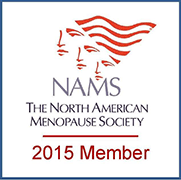Health Issues
Osteoporosis is a condition that causes “bones to become thin and porous, decreasing bone strength and leading to increased risk of breaking a bone” Osteoporosis has been named the “silent” disease because it shows no symptoms until a fracture occurs.(2) According to Osteoporosis Canada almost 2 million Canadians are living with osteoporosis; and at least 1 in 8 men over the age of 50 is affected by it.(3) Once thought of as primarily a ‘woman’s disease’; certain risk factors and lifestyle habits are known to put men at risk for developing osteoporosis.(3)
Men versus Women
Osteoporosis develops less often in men compared to women because:
-Men have larger bones and greater bone mass
-Bone strength is dependent on bone mass and bone size.
-Once bones have reached their peak mass they begin to decline at a steady rate; for men this occurs around age 30; compared to women when it occurs in their 20s. Therefore men have gained more bone mass compared to women.(4,5,6)
Types of Osteoporosis in Men
Primary Osteoporosis- is caused by age related bone loss; or the cause of osteoporosis is sometimes unknown.(2)
Secondary Osteoporosis- the loss of bone mass is caused by certain lifestyle behaviors, diseases, or medications.(2)
Risk Factors
Primary Osteoporosis Risk Factors
Age-with increased age comes increased risk.
Family history of Osteoporosis
Experiencing a fracture (especially involving the spine) after the age of 40.
Unknown causes
Secondary Osteoporosis Risk Factors
Hypogonadism (low levels of testosterone)
Hyperparathyroidism (too much parathyroid hormone is produced by the parathyroid glands).
Hyperthyroidism (overactive thyroid gland)
Gastrointestinal disorders-conditions that prevent absorption of nutrients such as:
Malabsorption syndromes (such as short gut syndrome, inflammatory bowel or celiac disease).
Primary biliary cirrhosis (inflammation of the bile ducts of the liver)
Hypercalciuria (calcium in the urine)
Glucocorticoids (medications used to treat asthma and rheumatoid arthritis)
Anticonvulsants (especially phenytoin or phenobarbital).
Thyroid hormone
Chemotherapeutics
Lifestyle choices
Low calcium intake
Cigarette smoking
Not enough physical exercise
Excessive alcohol use (more than 2 drinks per day)
References used: (2,4,5,6,7,8,)
Diagnosis
Osteoporosis often shows no symptoms until a fracture has occurred; before that happens be sure to talk to your healthcare provider if you notice any of the following:
-Loss of height
-Any changes in posture
-Sudden back pain.(2, 8)
Osteoporosis is diagnosed through the use of a Bone Mineral Density test. The test involves taking a scan of your body particularly the spine and hips to measure how dense your bones are. The test will tell you if you have osteoporosis, are at risk for a fracture, and how well you respond to treatment. (2,8)
Osteoporosis Canada Recommendations for Bone Mineral Density testing if:
- You are 65 or older
-You and your physician have done a risk factor assessment and have determined that you are a high-risk individual
-You have lost four or more cm in height (1.6 inches) overall; which is approximately (six cm (2.4 inches) or more in those 60 years or older) or two or more cm (0.8 inches) in less than three years.
-You have kyphosis (excessive curvature of the spine resulting in either a hump or a more gradually rounded back).
-You are taking glucocorticoid medication (ex: oral prednisone or cortisone), and want to determine if you are losing bone mass and whether treatment for osteoporosis is required.
-You have recently had a fracture in which osteoporosis is suspected.
-You already have osteoporosis and you and your physician are monitoring the effectiveness of the treatment.
For further information about Bone Mineral Density testing please go to www.osteoporosis.ca
The treatment for osteoporosis does not differ between men and women. Men are advised to make lifestyle changes such as:
-give up smoking, and excessive drinking
-add more calcium (1200 mg) and vitamin D (800 IU) into their diet
-do exercises that encourage weight bearing, balance, and co-ordination.
-have regular screening for osteoporosis
Created by Mia Kubrak for The Women’s Midlife Health Program
Nursing Education Program of Saskatchewan
January 2010 updated August 2010
Reference:
1 Osteoporosis Society of Canada (2007). Osteoporosis update a practical guide for Canadian physicians. Retrieved January 13, 2010 from http://www.osteoporosis.ca/local/files/health_professionals/pdfs/OsteoWinter07_WebEdit.pdf
2 National Institute of Health Osteoporosis and Related Bone Diseases’ National Resource Center (2009).Men and osteoporosis. Retrieved January 12, 2010 from www.niams.nih.gov/Health_Info/Bone/Osteoporosis/men.asp
3 Osteoporosis Canada (2008). Facts and statistics. Retrieved January 13, 2010 from http://www.osteoporosis.ca/index.php/ ci_id/8867/la_id/1.htm
4 Bilezikian, J.P. (1999). Osteoporosis in men. The Journal of Clinical Endocrinology & Metabolism, 84 (10), p. 3431-3435.
5 Campion, J.M.m Maricic, M.J. (2003). Osteoporosis in men. American Family Physician, 67 (7), p.1521-1527.
6 Khosla, S., Amin, S., Orwoll, E. (2008). Osteoporosis in men. The Endocrine Society, 39 (4), p. 441-464.
7 Pande, I., Francis, R.M. (2001). Osteoporosis in men. Best Practice and Research Clinical Rheumatology, 15 (3), p. 415-427.
8 Osteoporosis Canada (2009). Men and osteoporosis. Retrieved January 12, 2010 from http://www.osteoporosis.ca/index.php/ ci_id/7037/la_id/1.htm
Improving Women's Lives Through Better Health in Mid-Life and Beyond


